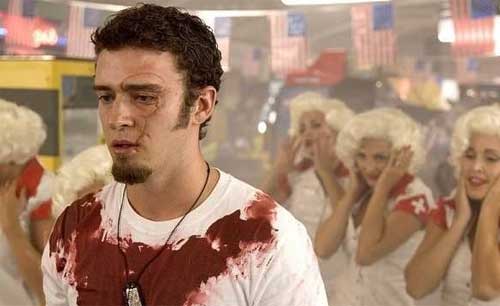Title:Urotsukidoji: Legend of the Overfiend
Director:Hideki Takayama
Released:1989
Review: Reknown as one of the landmark titles of adult animation, this
notorious anime adapted from Toshio Maeda’s manga has continued to shock
each new generation of anime fan who no doubt were directed to it by
the previous generation. Of course when it was released in 1989 it
served in many ways to taint the impression the general public had about
anime while the hysteria lead by newspapers such as The Daily Mail began leading a public outcry to “Ban this sick filth”.
Of course looking at the film its easy to understand why audience
were so shocked when this title was released especially when there was
nothing else really like anime with the genre’s seemingly carefree
attitude its gratuitous sex and violence with the closest we had come to
such material in the west being the sporadic adult animated title such
as Heavy Metal or the films of Ralph Bakshi. Infact so uneducated
were audiences at the time especially with there being no internet to
refer to, anime was often refered to as Japanimation or Manga which was
certainly the case in the UK thanks to majority of titles being put out
by Manga entertainment.Because of Urotsukidoji’s notorious legacy for myself it was always a title I avoided much like many of the demon based titles, largely due to the feeling of watching something you really shouldn’t especially with popular titles of the era such as Violence Jack, Wicked City and Genocyber which seemed to relish the levels of sex and violence with thie popularity of these titles in many ways influenced the titles being available when I started getting into Anime in the late 90’s were the focus was often on more adventure, sci-fi and horror based titles than the staggering range that anime fans now have available to them. At the same time with most anime being only accessible via VHS releases / tape trading it limited further what you could watch with the cost of these tapes often making you more cautious about not wanting to be lumped with a tape you couldn’t pass on. Still with the aim of trying to cross off the list those anime titles for one reason or another I’d missed I finally decided to bite the bullet and watch it.
Originally released as a series of three OVA’s (Original Video Animation) which were edited down into this theatrical version for western audiences at the same time cutting around 40 mins of gratuitous sex and violence, something that many fans / anime sweaties are often quick to gripe about despite there still being plenty of nudity, gratuitous violence and demons befiling humans left in the film and taking a look at the cuts list its nothing that I personally can’t live without but of course if your the sort of anime fan who wants to see such things and have the extra bucks to pay trader prices you can hunt down the uncut version released in the Perfect collection via Anime 18.
The film meanwhile see’s the Earth realm as one of three interconnected dimensions alongside the demon dimension of the Makai and the more ethereal realm of the beast people known as the Jujinkai which our antihero Amano and his sister Megumi belong to. The pair have spent the last 300 years looking for the Chojin (or Overfiend) who according to legend rises every 3000 years to bring the three realms together in harmony. However despite the seemingly straightforward plot this is a film heavy in random sub-plots and schemes being carried out by various members of the demon realm whose encounters with humans usually end in splatter heavy violence and more worryingly rape, something the film certainly takes a shockingly lax approach to compared to the west.
Amano and Megumi’s mission soon leads them to encounter the shy clutz and occasional peeping Tom, Negumo who has fallen for the popular cheerleader Akemi and following a series of situations which unquestionably make for awkward viewing the pair end up forming an unlikely couple which is of course only complicated further when Negumo is revealed to be the Chojin that Amano and Meguimi have been hunting for. A reveal which in one of the more memorable moments sees him taking on his gigantic demon form in a transformation sequence which sees a trio of penis tentacles tearing through a hospital. The plot at times can feel confusing and distracted which many fans blame on the cuts while for myself it was mainly because of its desire to constantly work in those graphic moments which see the film diverting off course to add another thrill but when it works its still an interesting plot with some fun twists along the way, especially as the prophecy might play out the way that Amano expects.
Much like it’s creator the film’s influence on erotic anime and especially the Hentai genre can be seen throughout the film as its hard to ignore the scenes of graphic sex and roaming tentacles which when combined with the explict violence makes it far from the most accessible anime even though there are titles which followed in its wake which certainly pushed the boundaries of taste further including Toshio Maeda’s own L.A. Blue Girl. Needless to say that despite its importance within the history of anime, this is not going to suit all tastes however if you can stomach the more explict aspects to the film it is still an enjoyable…if that’s the right way to phrase such an experience that this film certainly is.
































